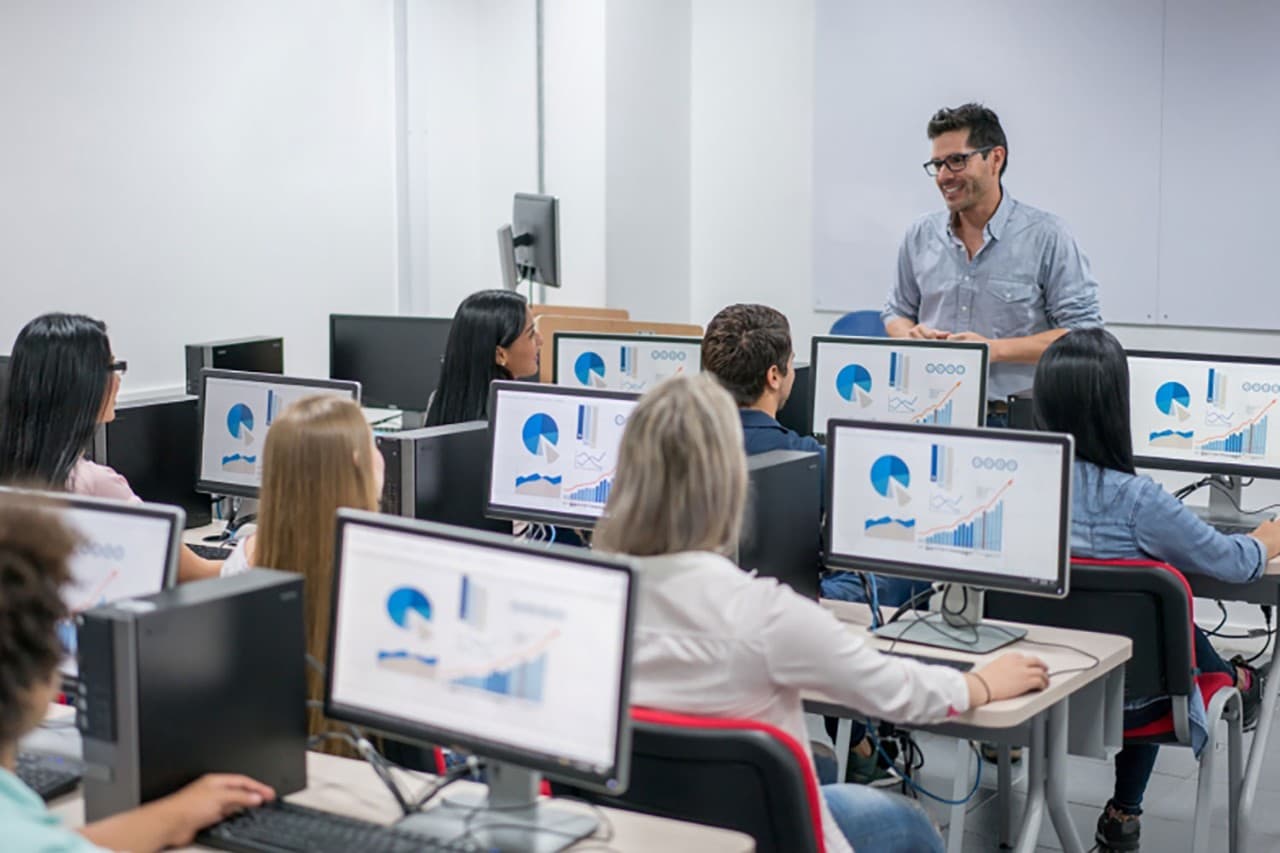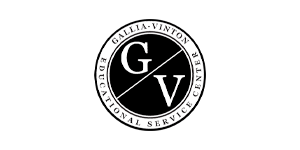- Başarı Öyküleri
- Gallia-Vinton Educational Service Center

Changing the data conversation in Ohio schools

SAS® EVAAS data helps teachers facilitate student success

10%
achievement growth in seventh grade math
The Gallia-Vinton Educational Service Center achieved this using SAS® EVAAS for K-12
How the Gallia-Vinton Educational Service Center is transforming education one data conversation at a time
In the dynamic landscape of education, harnessing the power of data has become crucial for student success. Data is used in measuring effectiveness, identifying areas of improvement, student advocacy, scheduling and student success planning. However, for many educators, data can feel like a barrier to success rather than an enabler. An Ohio Educational Service Center (ESC) has changed this mindset by redefining the data conversation in its schools.
Using SAS EVAAS (Education Visualization and Analytics Solution), the conversation can evolve beyond traditional test scores to embracing a holistic approach that empowers teachers and administrators to make data-driven decisions. SAS EVAAS is a web-based tool designed to help schools evaluate the impact they are having on students. By unlocking the potential of data, fostering collaboration, and creating positive change to enhance student outcomes, schools in Ohio are embracing a culture of data literacy.
Data plays an important role. What we measure, we impact. If we have that data, we can make meaningful impact for our students. Thad Haines Administrative Associate Gallia-Vinton ESC School District
A look at Gallia-Vinton Educational Service Center
The Gallia-Vinton Educational Service Center is one of 51 ESCs in Ohio, having earned the high-performing ESC designation in 2022. ESCs aim to provide support to schools with services such as professional development for teachers and administrators, new principal mentoring, licensure training, grant writing services, and after-school and summer programming. The Gallia-Vinton ESC serves five school districts full time and provides contracting services to school districts in neighboring counties, faith-based institutions, vocational schools, and various government entities.
“We serve about 10,000 students among that pool of schools,” said Thad Haines, Administrative Associate of Gallia-Vinton Educational Service Center.
Empowering educators to use data for student success
Some of the schools the Gallia-Vinton ESC serves have been using SAS EVAAS technology for more than a decade. SAS EVAAS was initially adopted to promote student and teacher success by tracking and evaluating progress. In many cases, however, the data was primarily used by schools for evaluation purposes rather than utilizing the full scope of potential for supporting students.
The schools and districts needed additional support to help them fully leverage the SAS EVAAS reporting. In response, the Gallia-Vinton ESC decided to offer professional development sessions on how to effectively use the SAS EVAAS data to promote student success. They also began hosting biweekly data exploration sessions with teachers.
“Data plays an important role,” said Haines. “What we measure, we impact. If we have that data, we can make meaningful impact for our students. But I think it’s only part of the picture. It’s not the end-all, be-all. One of the things we always talk to educators about is putting that data in its local context. Anybody can go in and talk about data, but the people in those districts know the students and know their teachers a lot better than somebody coming in from the outside.”
In the Jackson City Schools district (one of the five primary districts serviced by the Gallia-Vinton ESC), the schools and ESC established a common planning time for all staff. Once every two weeks, a liaison from the ESC facilitates a collaborative session with each department to brainstorm ideas for student success based on SAS EVAAS and other data.
“This year we started looking at the data to help improve and guide instruction like it’s supposed to be used,” said Mark Broermann, Principal of Jackson Middle School. “As it began to shift away from the teacher evaluation conversation, teachers were a lot more receptive to the conversation because they finally saw data as a tool they can use to help kids and to improve their teaching, instead of a ‘this is what you’ve got’ conversation.”
With this regular, dedicated time for data exploration and collaboration, teachers began to work across classrooms to help kids succeed. Soon, information and idea sharing began happening across subjects and grade levels as well.
Broermann continued, “We talked to them about data and about the information that we had from testing, and they were more inclined to give ideas because they didn’t see it as a math, English or science problem anymore. Instead, they were seeing it as a building conversation for the whole school.”
Tara Richards, Assistant Principal of Jackson Middle School, witnessed the same effect. “Reframing the conversation made sure nobody feels targeted, which is pretty cool because now they just want to know how they can help,” she said.
Creating more open dialogue around student and teacher data has already yielded some impressive results for Jackson Middle School. One group that’s experienced an impressive benefit is seventh grade math.
“Our seventh-grade math students made a 10% achievement growth, which we haven’t seen before,” said Broermann. “We’ve always hovered around that same area – within 2% to 5% – and they jumped 10% this year from last year. Part of that success is simply the conversations, the open dialogue, and removing the ‘this is your score’ mentality.”
Gallia-Vinton Educational Service Center – Facts & Figures
9,293+
students served
5
primary school districts
33
afterschool programs
Transforming conversations with parents
The culture of data literacy has already extended beyond the staff. Educators are also using the data to improve conversations with parents. It can be challenging to change the conversation with parents whose kids have chronically struggled in school. With SAS EVAAS, teachers can show progress even before the student is caught up to grade level and show the probability of future success.
“SAS EVAAS data allows our teachers to speak in a more positive way about the students in our Tier 2 or Tier 3 with Positive Behavioral Interventions and Supports (PBIS) plans,” said Broermann. “Often, parents of these students have only heard negative things about their kid educationally because the student is behind. But when we can talk about academic growth, and say your kid went from red last year to green, and you can explain to them it means their child showed more than a year’s worth of educational growth, and they really blossomed with their teacher that year. If their growth is average or above average, it allows you to be more positive in some of those tough conversations that you have with parents.”
Helping students create their own success
Parents aren’t the only ones benefiting from the increase in conversations about data. Students are getting in on the action, too.
“One of the biggest strengths SAS EVAAS offers our districts is the ability for teachers to have individual conversations with students about where they are, where they need to be or where we want them, and to be able to be positive with kids that struggle academically but show growth,” said Broermann.
When educators can show a student their progress, it can encourage a child who is struggling in school to see how much they’ve grown. It can also motivate high-performing students to reach their next milestone when they see the path outlined clearly through data.
“Sometimes students see an individual test, and they think, ‘This means nothing to me,’” said Broermann. By showing them an individualized student dashboard, it helps teachers connect the dots for students and helps students understand how each small step contributes to their growth.
Changing the data conversation
Moving forward, the Gallia-Vinton ESC is working to build upon its successes and continues to cultivate data literacy among the schools it serves. “Sitting down to have those in-depth data conversations is probably one of the best things we’ve done in the last five or 10 years,” said Broermann.
By being more transparent with data, creating dedicated time to collaborate and broadening the conversation beyond teacher evaluations, the ESC expects to see more data-fueled student progress in the years to come.
İlginizi Çekebilecek İçerikler
Bu makalede gösterilen sonuçlar, burada açıklanan belirli durumlara, iş modellerine, veri girdilerine ve hesaplama ortamlarına özeldir. Ticari ve teknik değişkenlere bağlı olarak, her bir SAS müşterisinin deneyimi kendine özgüdür ve hiçbir açıklama tipik olarak düşünülmemelidir. Gerçekleşen tasarruflar, sonuçlar ve performans özellikleri, bireysel müşteri konfigürasyonlarına ve koşullara göre değişiklik gösterecektir. SAS, her müşterinin benzer sonuçlara ulaşacağını garanti etmemekte veya bu konuda bir taahhütte bulunmamaktadır. SAS ürün ve hizmetlerine yönelik tek garanti, söz konusu ürün ve hizmetlere dair yazılı anlaşmada belirtilen açık garanti beyanlarında ifade edilen garantilerdir. Bu belgedeki hiçbir ifade, ek bir garanti teşkil ettiği yönünde yorumlanmayacaktır. Müşteriler, üzerinde anlaşılmış bir sözleşmeden doğan bir alış verişin bir parçası olarak ya da SAS yazılımının başarılı bir şekilde uygulanmasının ardından sunulan proje başarı özetinde, başarılarını SAS ile paylaşmışlardır. Marka ve ürün adları, söz konusu şirketlerin ticari markalarıdır.
